The R-44 Sets a World Speed Record. On January 31, 1972, the Transit Authority used a consist of R-44 cars to conduct speed trials on the Long Island Railroad's main line tracks between Woodside and Jamaica. The R-44s set an official world speed record, for subway trains, of 87.75 mph, with TA personnel noting that the consist was still accelerating as it approached the end of the designated 5.9 mile-long test track. The TA repeated the speed trial, this time purposefully disabling two out of four motors per car, to indirectly simulate the effect of a rush hour crowd of passengers. The train still managed to reach 77 mph. The R-44s drew 650V DC from LIRR's third rail, a power supply system inherited from the Pennsylvania Railroad. The introduction of the Budd Company's high-performance M1 commuter MUs, beginning in 1968, mandated an upgrade of third-rail power to 750V DC in order to exploit the M1's capabilities. This work was carried out during 1971 and 1972, and was not quite finished when the R-44s made their record-breaking runs. The trials demonstrated the potential of the newest generation of subway cars to offer high-speed service. --Thanks to Ron Aryel
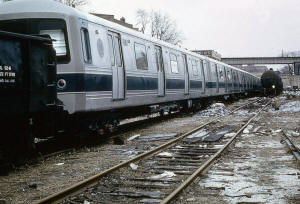
R-44 Parkville Jct. - 1/25/1972 Collection: Gerald Landau
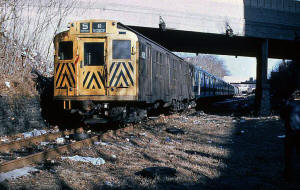
R-44 Bay Ridge Branch - 1/25/1972 Collection: Gerald Landau
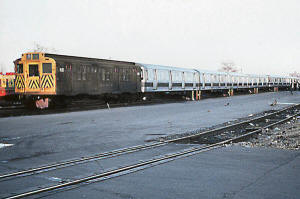
R-44 Fresh Pond Yard - 1/25/1972 Collection: Gerald Landau
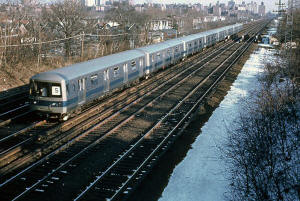
R-44 Woodhaven Blvd. - 1/25/1972 Collection: Gerald Landau
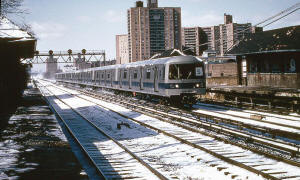
R-44 Forest Hills - 1/25/1972 Collection: Gerald Landau
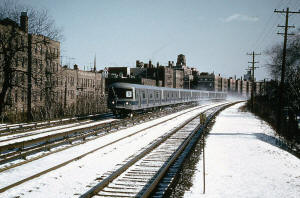
R-44 Forest Hills - 1/25/1972 Collection: Gerald Landau
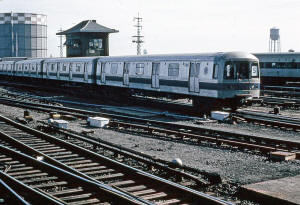
R-44 Hall Interlocking - 1/25/1972 Collection: Gerald Landau
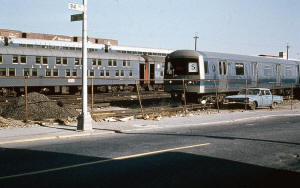
R-44 Dunton, Jamaica - 1/25/1972 Collection: Gerald Landau
The speed test where the R44s hit 87.75 MPH on the LIRR occurred on January 31st, 1972. The third rail was still set at 650VDC, not the upgrade to 750VDC that it would eventually receive . It hit 77MPH even with 1/2 the motors cut out to simulate a crush passenger load. The R44s were probably the worst subway cars ever built for NYC. P-Wire issues were rampant. Breakdowns were frequent until they were refurbished twice.
Structurally, they were weak from the onset. Too much LAHT steel was used as compared to the R46s. Camber became an issue in the early 2000s with crush passenger loads. The doors would not properly close until discharged. This set off the alarm bells and NYCT realized that these cars had negligible collision worthiness. Eric Oszustowicz
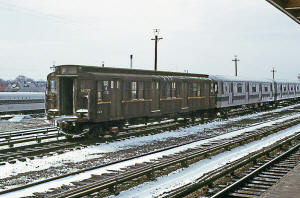
R-44 Jamaica Station - 2/20/1972 Collection: Douglas Grotjahn
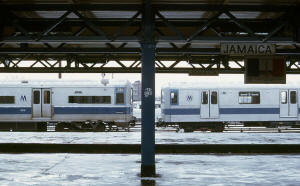
R-44 Jamaica Station - 2/20/1972 Collection: Douglas Grotjahn
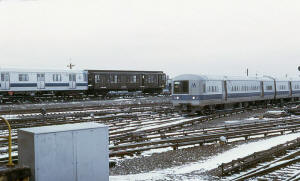
R-44 Jamaica Station - 2/21/1972 Collection: Douglas Grotjahn
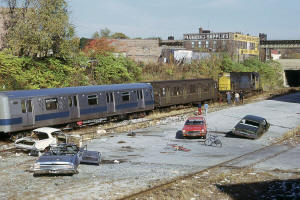
R-44 Parkville Jct. - 10/30/1972 Collection: Douglas Grotjahn
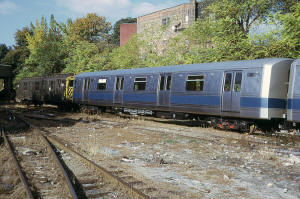
R-44 Parkville Jct. - 10/30/1972 Collection: Douglas Grotjahn
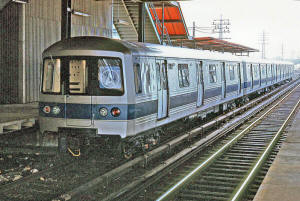
R-44 Shea-Stadium - 11/07/1972 Collection: Gerald Landau
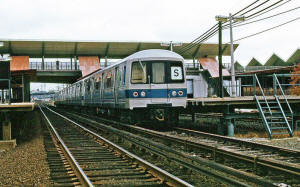
R-44 Shea-Stadium - 11/07/1972 Collection: Gerald Landau
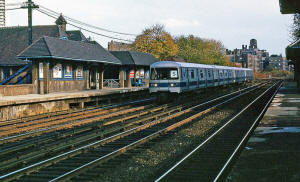
R-44 Forest Hills - 11/07/1972 Collection: Gerald Landau
| Designation | Unit Numbers | Manufacturer | Years |
|---|---|---|---|
|
R-46 |
5482-6207 (inclusive), |
Pullman |
1974-1975 |
75' long, 10' wide
5482-6205 in 4-car sets (A-B-B-A; even numbers have cabs; odd numbers "blind"); 6206-6207 is an A-B set, 6208-6258 (even numbers only) are A-A sets. Cars in sets are numbered in consecutive order. Lowest number usually divides only by two. Highest number is odd.
Cars originally 500-1227 (all), 1228-1278 (even). The cars were not renumbered in order. See detailed roster below for the original numbers
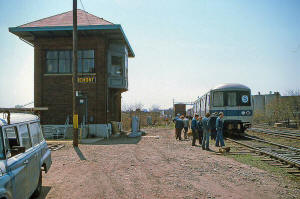
FREMONT Tower Junction - View S
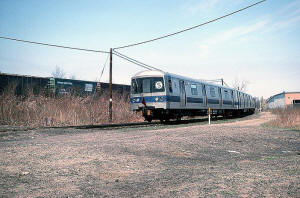
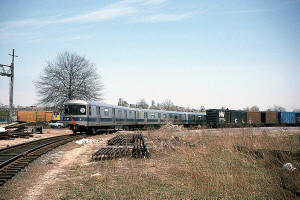
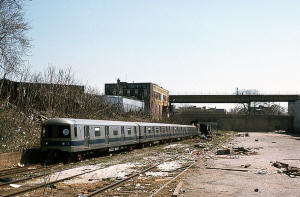
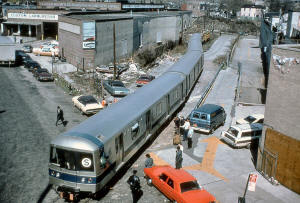
Parkville Junction #508, #6114
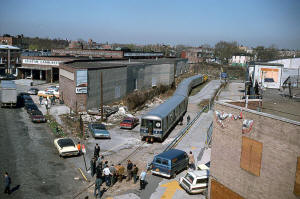
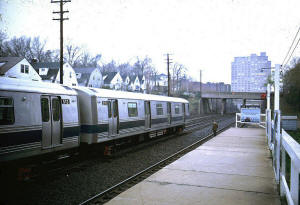
R-46 #513, #510 testing at Kew Gardens - 4/24/1975 Collection: Steve Zabel